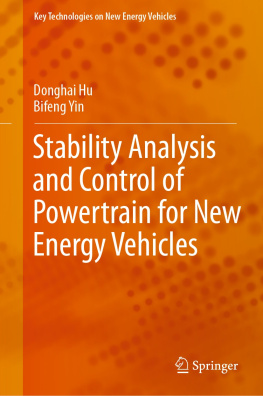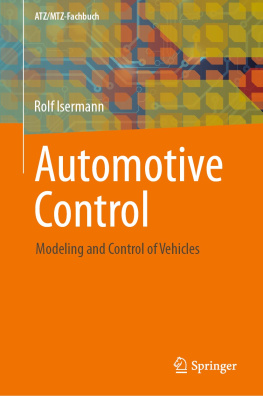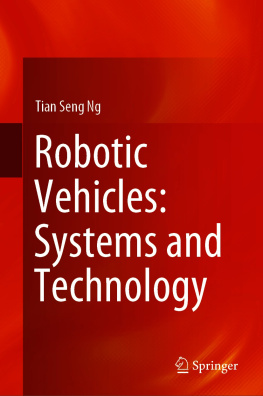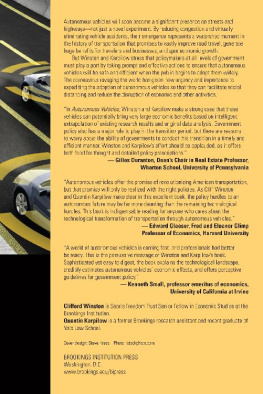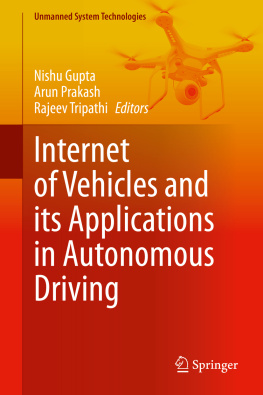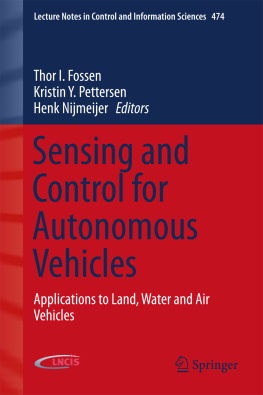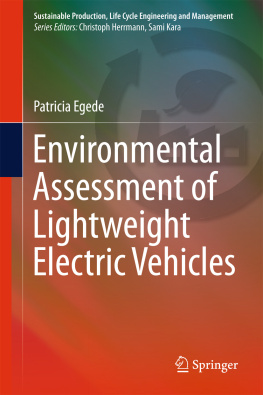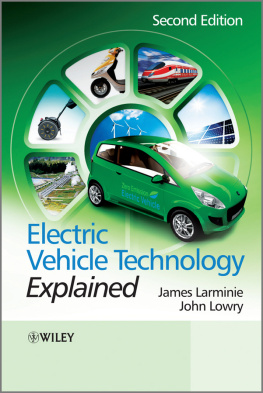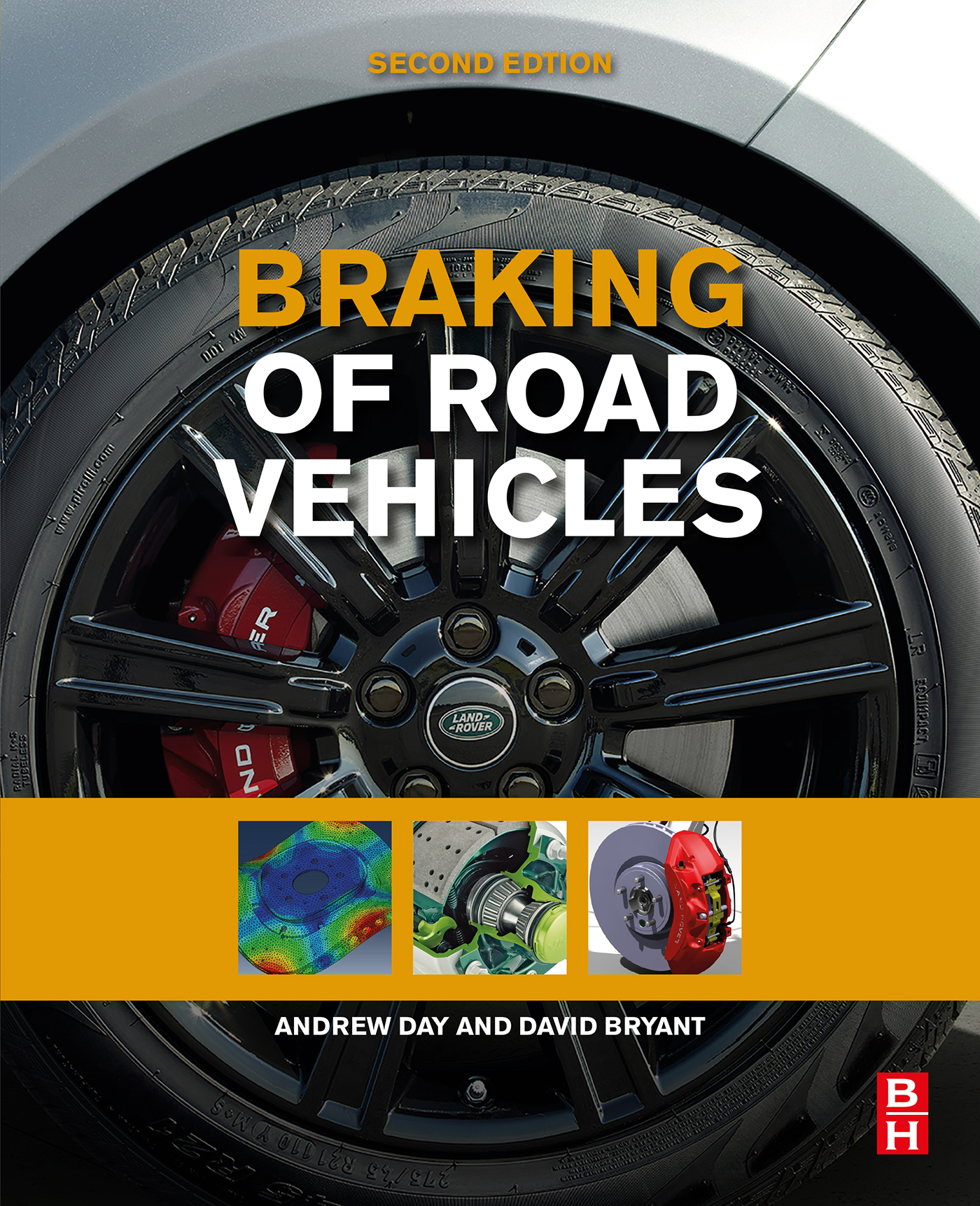Table of Contents
List of tables
- Tables in Chapter 2
- Table in Chapter 3
- Tables in Chapter 4
- Tables in Chapter 5
- Tables in Chapter 6
- Tables in Chapter 7
- Table in Chapter 8
- Tables in Chapter 9
- Tables in Chapter 10
- Tables in Chapter 11
- Tables in Chapter 12
List of figures
- Figure in Chapter 1
- Figures in Chapter 2
- Figures in Chapter 3
- Figures in Chapter 4
- Figures in Chapter 5
- Figures in Chapter 6
- Figures in Chapter 7
- Figures in Chapter 8
- Figures in Chapter 9
- Figures in Chapter 10
- Figures in Chapter 11
- Figures in Chapter 12
Landmarks
Braking of Road Vehicles
Second Edition
Andrew Day
M.A. (Cantab), PhD. (Loughborough), C.Eng., F.I.MechE., Professor Emeritus, University of Bradford, UK
David Bryant
MEng (Leeds), PhD. (Huddersfield), PGCert (Huddersfield), AMIMechE, Associate Professor, University of Bradford, UK

Copyright
Butterworth-Heinemann is an imprint of Elsevier
The Boulevard, Langford Lane, Kidlington, Oxford OX5 1GB, United Kingdom
50 Hampshire Street, 5th Floor, Cambridge, MA 02139, United States
Copyright 2022 Elsevier Inc. All rights reserved.
No part of this publication may be reproduced or transmitted in any form or by any means, electronic or mechanical, including photocopying, recording, or any information storage and retrieval system, without permission in writing from the publisher. Details on how to seek permission, further information about the Publisher's permissions policies and our arrangements with organizations such as the Copyright Clearance Center and the Copyright Licensing Agency, can be found at our website: www.elsevier.com/permissions.
This book and the individual contributions contained in it are protected under copyright by the Publisher (other than as may be noted herein).
Notices
Knowledge and best practice in this field are constantly changing. As new research and experience broaden our understanding, changes in research methods, professional practices, or medical treatment may become necessary.
Practitioners and researchers must always rely on their own experience and knowledge in evaluating and using any information, methods, compounds, or experiments described herein. In using such information or methods they should be mindful of their own safety and the safety of others, including parties for whom they have a professional responsibility.
To the fullest extent of the law, neither the Publisher nor the authors, contributors, or editors, assume any liability for any injury and/or damage to persons or property as a matter of products liability, negligence or otherwise, or from any use or operation of any methods, products, instructions, or ideas contained in the material herein.
ISBN: 978-0-12-822005-4
For Information on all Butterworth-Heinemann publications visit our website at https://www.elsevier.com/books-and-journals
Publisher: Matthew Deans
Acquisitions Editor: Brian Guerin
Editorial Project Manager: Emily Thomson
Production Project Manager: Anitha Sivaraj
Cover Designer: Mark Rogers
Typeset by Aptara, New Delhi, India

Table of Contents
Preface
Aimed as an introductory textbook about the science and technology of road vehicle braking, this Second Edition of the Braking of Road Vehicles book has been revised, updated, and expanded to reflect recent technological developments and evolution in the original subject matter so that it continues to be a source of reference for both new and experienced engineers working within the industry.
David Bryant has joined the First Edition author Andrew Day as co-author of this Second Edition, and in its preparation, we have each drawn upon our many years experience of teaching and research relating to braking and automotive systems. One of our most influential sources has been our interactions with the many expert practitioners and hundreds of delegates through the annual Braking of Road Vehicles short course for the industry at the University of Bradford since 1996 (the course itself started at Loughborough University in 1966). These people, with their thirst for knowledge, have contributed their own expertise and asked many questions, giving freely of their time. We extend our thanks to all colleagues, companies, and organisations who have supported and helped us to advance our knowledge over so many years; we have named some of them below but there are many more un-named to whom we also owe some debt of gratitude.
The field of vehicle braking continues to be a fascinating discipline which is constantly evolving and adapting to meet new challenges and requirements, so we have broadened and deepened each of the chapters to reflect the associated technologies and developments. What has become apparent to us whilst writing this Second Edition is the considerable influence that regenerative braking is now having upon all areas of road vehicle braking, whether it be advanced control systems and technologies, alternative materials, particulate emissions, or legislative requirements.
The structure of the book remains much the same as the First Edition, although there has been some re-ordering of chapters and content to improve the flow. The first six chapters introduce the fundamental engineering theory; Chapters 711 cover specialist topics; and Chapter 12 rounds off with a selection of case studies relevant to the individual disciplines covered within the book.
Chapter 1 (Introduction) has been updated to reflect how recent developments in vehicle design, in particular powertrains, have influenced all areas of braking science and technology.
Chapter 2 (Friction Pairs) covers recent developments including new and alternative materials and the significance of particulate emissions.
Chapters 3 and 4 (Braking System Design for Passenger Cars and Light Vans/Vehicle and Trailer Combinations) have been updated to provide additional clarity to the text.
Chapter 5 (Brake Design Analysis) includes several revised analyses and an alternative method of drum brake torque calculation with comparisons to more classical methods.
Chapter 6 (Brake System Layout Design) now includes content on brake actuation requirements, electro-mechanical and electro-hydraulic actuators, regenerative braking, and mixed-mode brake blending.
Chapter 7 (Electronic and Autonomous Braking Systems) has been updated to include new content on brake-by-wire technologies, autonomous braking, regenerative braking, and expanded text on the various electronic control strategies.
Chapter 8 (Thermal Effects in Friction Brakes) includes additional content on numerical modelling, and thermal localisations, such as hot banding and hot spotting.
Chapter 9 (Brake Noise, Vibration, and Harshness) has been substantially updated covering experimental analysis of brake squeal, judder, and creep groan, with additional theoretical, experimental, and numerical examples.
Chapter 10 (Brake Testing) has been updated to provide additional detail, examples, and clarity to the text including requirements and procedures for the measurement of brake particulate emissions.




